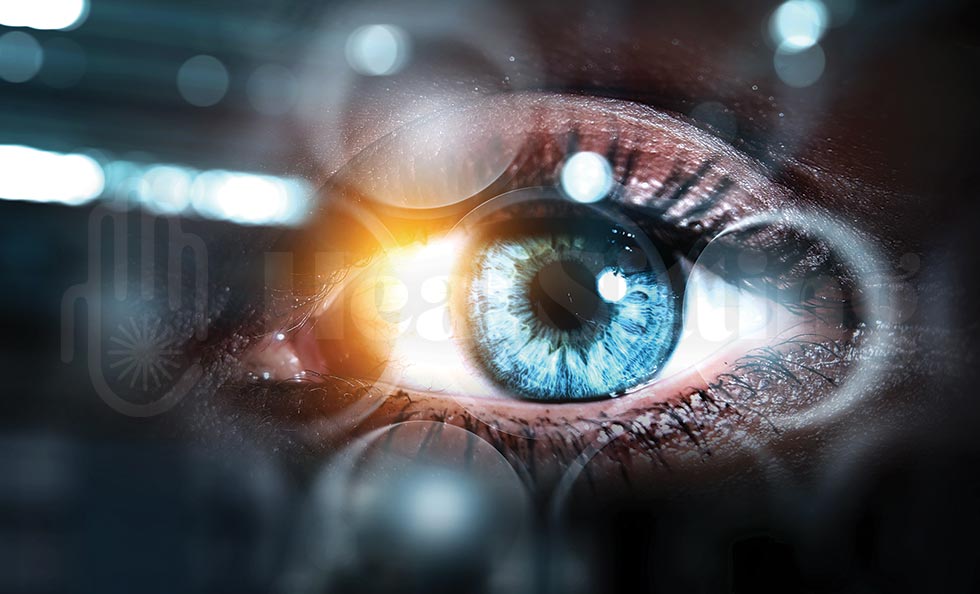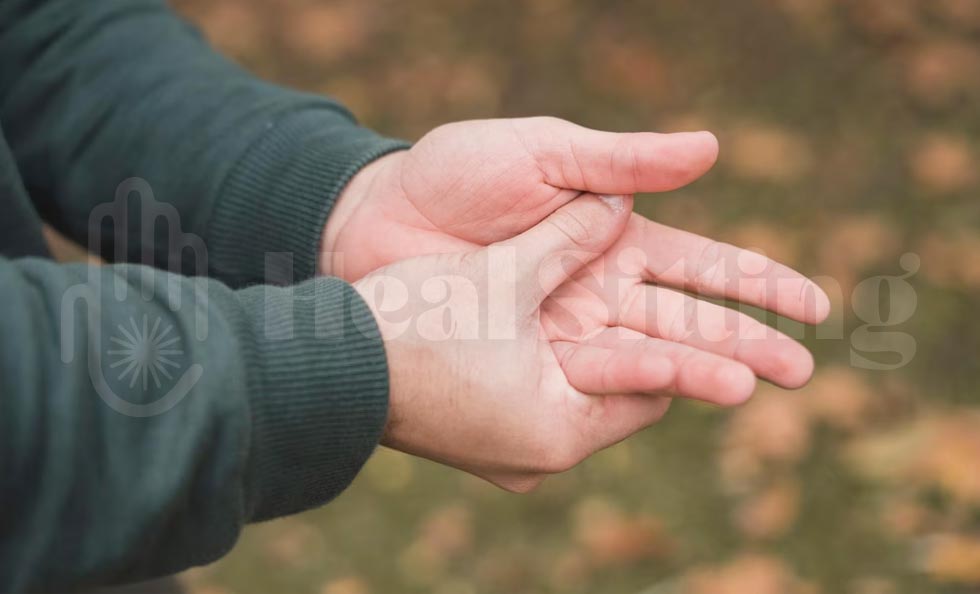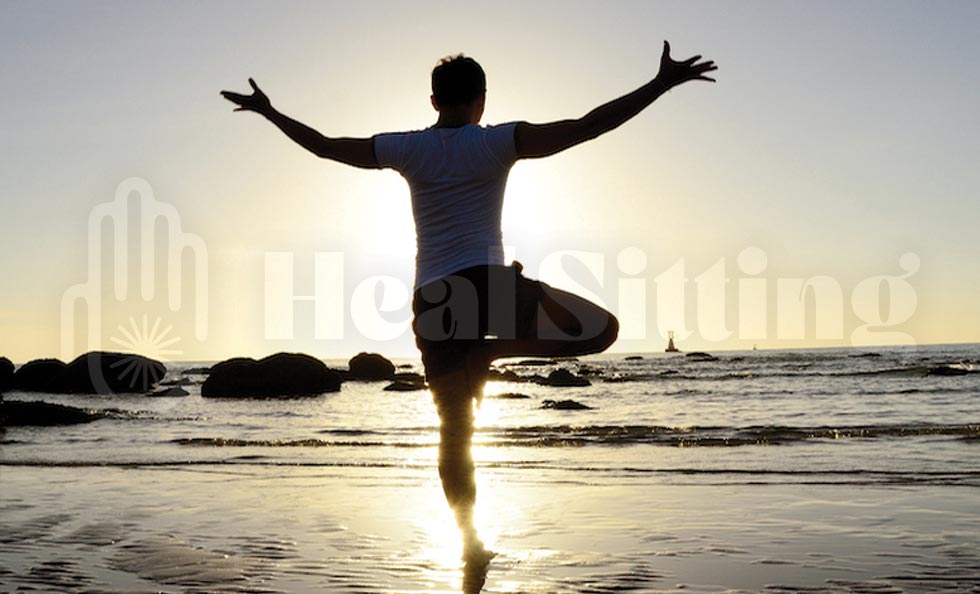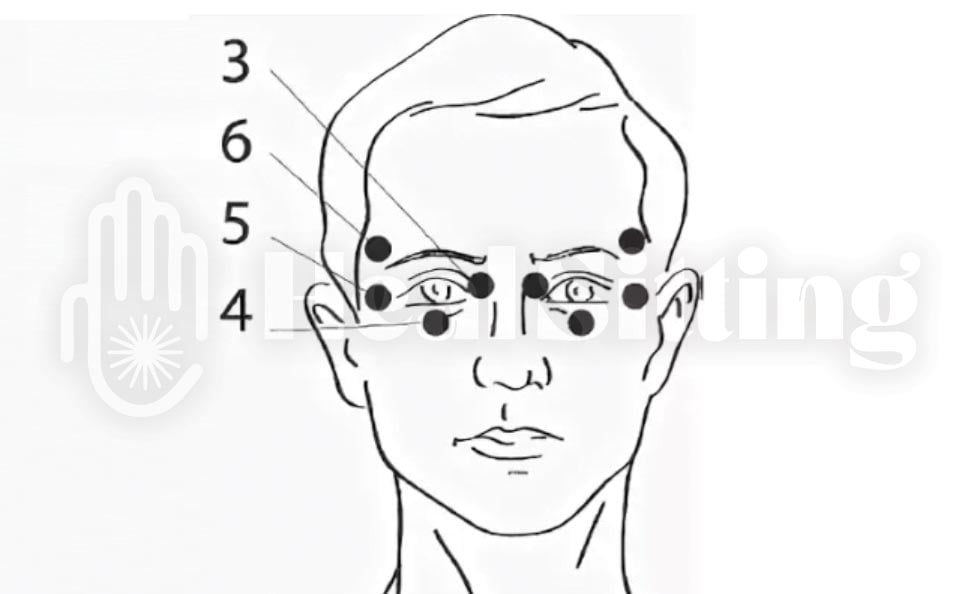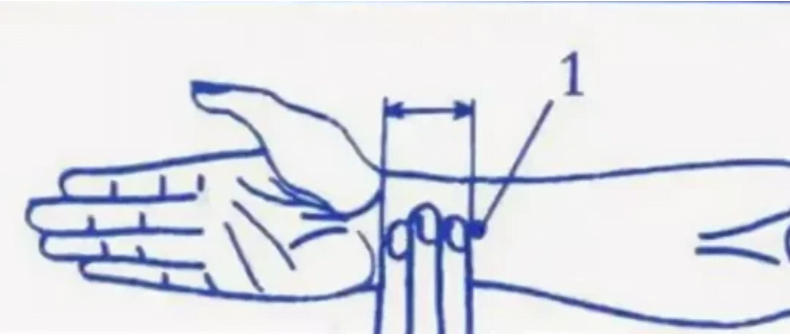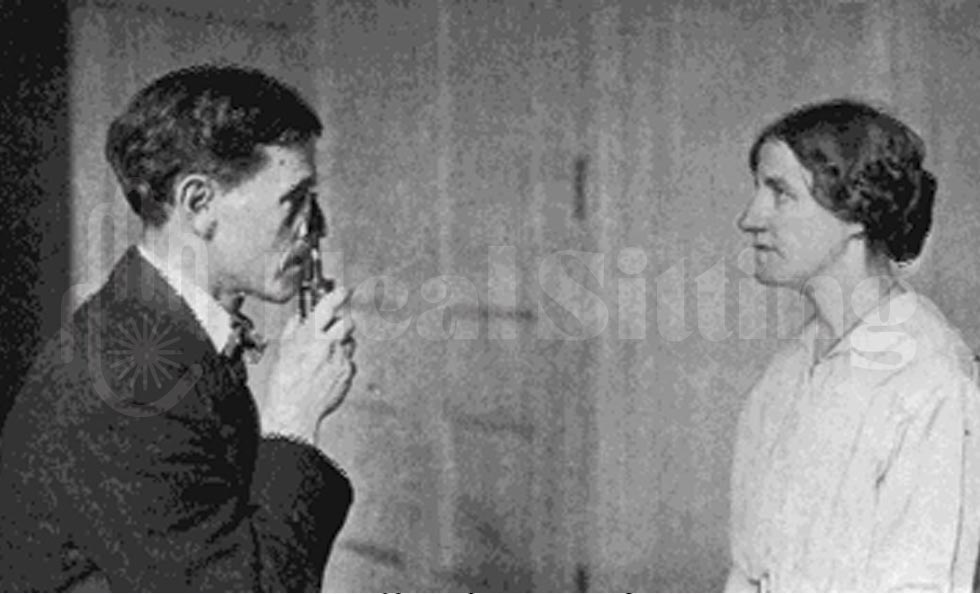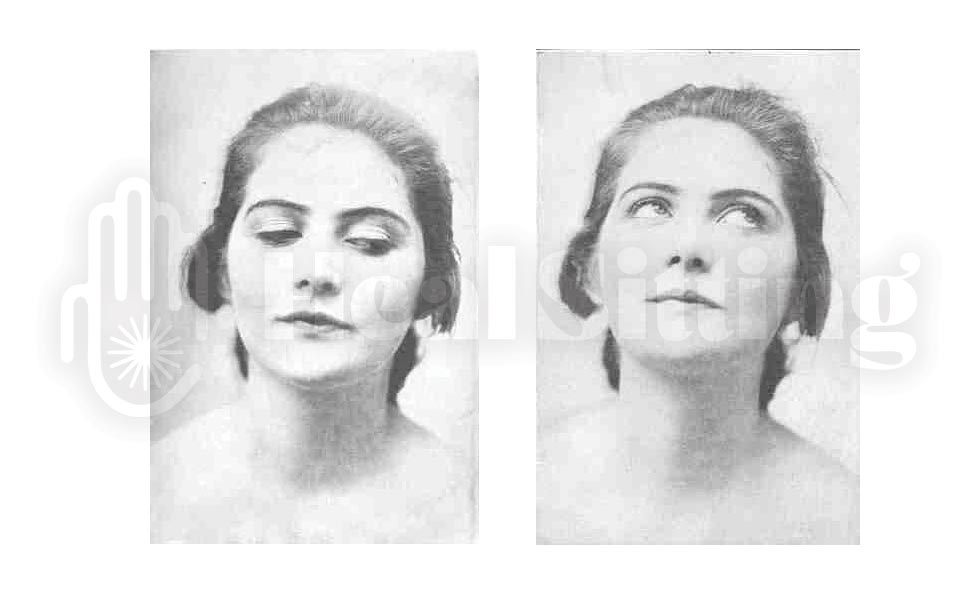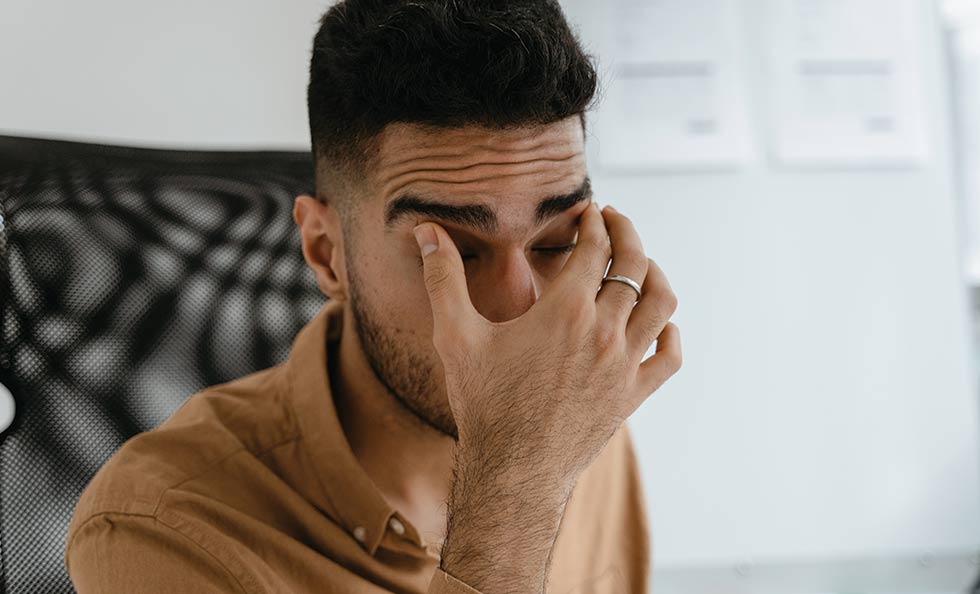The secrets of preserving good vision at any age. These simple techniques will help you to keep your TRUE SIGHT: all you have to do is take the time and do it regularly.
I offer you my piggy bank of various techniques, which my father, a man who was prescribed glasses in his early youth, began to share with me, but he decided to go the other way. Now my dad is 72 years old. And he does not and has never had glasses. He worked as a programmer, physics, and math teacher, now retired. He reads a lot, actively uses the computer, and regularly checks with the ophthalmologist. And for all these activities uses only his eyes. No lenses.
A collection of tips for maintaining excellent vision
- Indian technique “See black”
- Hot Palms
- Chinese “Golden rooster stands on one leg
- Taoist Walking
- Precision Massage
- The William Bates Method
Warning! This article is not a guide for self-treatment. Please consult your doctor! This publication contains only prophylactic and visual acuity improvement measures.
I have been using the secrets my father shared with me since childhood. And gradually learned about other techniques. All my children have good vision (one in each eye). My oldest son, at age 7, had a slight vision loss in one eye. However, he is now 21 years old and has no vision problems.
So, are you ready? Sharing!
The Indian “See Black” technique
Now I don’t even remember where I originally learned about it. Because I’ve been using it since I was a teenager. Later I met it in many books.
On my channel described in a narrative (publication format for smartphones):
Give your eyes a rest right now! Indian technique for 5 minutes
This technique always gives instant results if your eyes are very tired. Even in cases where it feels like sand has been poured into them. When they are already burning from the flicker of the monitor. Of course, you shouldn’t force your eyes to that state. But there are work situations that require prolonged reading/working with the computer. And this technique VERY much helps to relax the eyes.
How to do it:
- Sit comfortably or lie down.
- Close your eyes.
- Additionally, cover your eyes with your palms.
- And try to see with your eyes closed a solid blackness. Absolutely solid.
There is no way to do it: some barely visible white, reddish, yellowish sparkles flicker. I cannot see a completely uniform black background. But you have to try to achieve the desired effect as much as possible.
I read in one source that if a person manages over time to see a completely black and uniform background, without a single fleck of even gray shades, then any vision will return to perfect.
I want to say that despite the fact that I have been practicing this technique for over 2 decades, I have never once been able to see a completely black background. Still some flecks appear. But! To be fair: my eyes instantly get such a rest, as if they were washed with spring water. And the vision does not fail.
Later in one of the books I read how you can help yourself to see perfect blackness: do this exercise in a dark room, tightly cover your closed eyes with your palms, and imagine something very black against a black-black tablecloth. I imagine a black cube against a black satin cloth.
2. Hot Palms
This is one of the techniques my father shared with me back when I was a kid (mine, of course). I haven’t seen this technique anywhere else yet.
When you feel that your eyes are tired, then quickly rub the pads of your palms (the lower convex part) against each other. Close your eyes and apply the hot palm pads to your closed eyelids. Hold for a few seconds. Now gently open your eyes. And look into the distance.
This technique also helps the eyes to relax. I’ve been using it since I was a kid. Although the Indian “See Black” technique is more effective, it takes longer.
3. Chinese “Golden rooster standing on one leg
How the exercise is done:
- You need to stand up, close your eyes, and with your eyes closed, lift one leg with it bent at the knee.
- Stand for as long as you can.
Honestly, most people limit their first time to literally 10 seconds. Now do the same thing on the other leg.
Despite the seeming simplicity and ease of doing this exercise, keeping the balance on one leg with your eyes closed is incredibly difficult! I know people who couldn’t even stand for a second. Now they can stand for a minute or even longer. My record so far is 120 seconds on the left side.
In addition to the fact that this exercise is very beneficial to health in general, it also improves visual acuity. One reader then wrote in a comment that the Golden Rooster One-Leg Pose engages the foot meridians. This includes the one associated with our senses, including sight.
Later, I’ll become more familiar with the beneficial effects of this exercise and the concept of meridians. So far, I cannot say that I have studied the subject deeply enough, but it is obvious: doing a one-leg stand with eyes closed has a positive effect on vision. The effect is noticeable, of course, not at once: not after a week/month, but gradually you will notice that you see more clearly even with the eye that was “lagging behind”. Usually, humans do not have absolute symmetry: each of us has his or her own leading arm, leg, eye, and even nostril. So doing this exercise allows you to improve the performance of the “lagging” eye as well. For me, it’s the left eye.
4. Taoist Walking
How to do it:
- Simply get on your knees and walk. To improve your vision – with your eyes closed! Beforehand, of course, you need to secure the space.
- When you start walking on your knees with your eyes closed, you’ll find that you go off track very quickly. That’s why it’s so important to make sure you don’t bump into anything. The deviation from a straight line will be very significant at first. Gradually your cerebellum will train, your sense of internal balance will improve, and you’ll notice how you can take several steps exactly in one line.
Not only is this type of walking healthy and promotes longevity, but it also works as an excellent preventative against visual impairment. So does just about any other balance exercise. Especially with your eyes closed
5. Point Massage
With all my love of reflexology, it would be strange not to know about the points that stimulate the eyes and increase visual acuity. I use finger pressure on these points every day. Considering the specific nature of my work, in my case this prevention is vital. I am sharing this with you!
First of all, they are points located directly around the eyes:
- Near the inner corners of the eyes closer to the bridge of the nose (number 3 in the picture).
- Under the lower eyelid about the eye line with the center of the eye (number 4 in the picture).
- On the outer corners of the eyes. The point of the Tongzi Liao (number 5 in the figure).
- Near the tip of the eyebrow (number 6 in the picture).
These points are massaged with the pad of the finger for a few seconds. I move along the line: first the points at the bridge of the nose, then under the lower eyelid, then in the outer corners, and finally at the tip of the eyebrow.
Important: Never put too much pressure on your fingers! The skin around the eyes is very thin, delicate, and sensitive. The effect is not increased by the force of the pressure. The most important thing is regularity. Massage these points daily and you will not only maintain good vision but also improve microcirculation in the tissues around the eyes. And this is the prevention of wrinkles.
We massage the points around the eyes with the eyes closed. At the same time on both sides.
Other helpful points to improve and maintain visual acuity:
At the very center of the earlobe
At the base of the skull, at the back of the neck.
About 3 folded fingers apart on the inside of the hand.
6. The William Bates Method
I bought this book almost in a state of despair in 2005 when my eldest son was diagnosed with vision loss in one of his eyes. To this day I never cease to wonder how life itself gave me such good fortune: the first time I read exactly what I needed!
The book, in many ways, turned my ideas about how to preserve vision. Almost 14 years have passed since then, and I still remember the key points.
Of course, I did not rely solely on my memory to write the article. And I opened the book again and was not too lazy to find out some facts from the author’s biography.
Meet William Horatio Bates.
1860-1931.
American ophthalmologist. Developed his own system of non-pharmacological vision restoration. His techniques were criticized by his colleagues, and some points are controversial for modern ophthalmologists as well. However, all over the world, there are centers working according to the Bates method.
Now, analyzing the book, I can already base not only on my own impressions and the situation with my eldest son’s eyesight, but I also involuntarily make analogies with Indian and Chinese techniques. And what I want to say is that the techniques described by Bates are largely based on those ancient teachings that command respect and are still popular today. The efficacy is personally verified.
Bates and his supporters’ opinions on eyeglasses
Bates claims that glasses prevent the return of normal vision. Here, of course, I would not venture to draw conclusions for a general audience. But I find Bates’ arguments persuasive. And the example of my father, who initially gave up his glasses when he was young and regained full vision, and the example of my own son are doubly convincing to me. My mother wore glasses when she was young and never took them off again.
Bates, as well as M.D. Corbett, Spencer, and C.L. Thomson make arguments against glasses and agree on one thing: lenses perform the function that eye muscles are supposed to do. If a healthy muscle is not constantly put to work and its amplitude is not fully exploited, it ceases to move fully, losing its ability. There are also examples of people who have lost their glasses for a while (for example, by breaking them), and their vision has only improved as a result. In addition, glasses lead to the habit of following a moving object by turning the head, rather than moving the eyeballs. And this, too, is not good for the training of eye muscles.
However, all said does not mean that it is necessary to remove glasses and, risk their own life and the welfare of other road users, to sit behind the wheel. No one has canceled a sensible approach, including Bates himself.
The book provides a step-by-step framework for giving up eyeglasses. But not in Bates’ work itself, but in the preface compiled by various authors. I will briefly summarize the main points:
To begin with, it is recommended at least occasionally not to use glasses for some habitual everyday activities, thus training your eyesight. For example, during breakfast, in conversations with friends. And it is advised to increase such “glasses-free time” every day. C. Hackett, for example, even advised me to mark in the diary how much your “glasses-free time” lasted today.
Taking off glasses and straining your eyes all the time is harmful and unhelpful. You should put your glasses on whenever you have to strain your eyes.
If you have to work with glasses on, take regular breaks for relaxing exercises.
Never (!) drive a car without glasses. Only if your eyesight improves and the results of the medical commission give you the appropriate permission.
As your vision improves, it is important to change your glasses for weaker ones in a timely manner.
When doing exercises for the vision you should always take off your glasses (except for special techniques, which are performed even with glasses on).
If possible, you should try to read without glasses. Note: if possible! That is, it is not necessary to force events and sit, straining your eyes as hard as possible in order to see the letters.
To be fair: yes, my father does not wear glasses and has regained his sight. But! He is regularly seen by an ophthalmologist for cataracts. So visual impairment and eye disease are not the same things. Be sensible and don’t neglect medical care!
Techniques from Bates
I will not cite the controversial techniques from Bates. Still, it is better that you yourself read his book and consult your doctor. But I will indicate the most basic techniques for prevention and improvement of visual acuity:
Palming
Let me explain what palming is. The word is of English origin: palming. It comes from the English word palm – “palm” (in Russian). There are a lot of palming techniques, but all have one thing in common: palms close your eyes.
For example, the very Indian technique “Seeing Black,” with which I began my publication. It is a safe technique for deep relaxation of the eyes.
Palming techniques are described in ancient yoga texts as well as in Chinese medicine. There are also descriptions in the works of modern Indian authors: S. Sivananda, L.K. Sharma, and R.S. Agarwala.
Important: when performing palming, we NEVER put pressure on the face, let alone on the eyeballs. The palms of your hands simply cover the eye area. There is no need to press down on the fingers and palm pads. The hands are relaxed.
The classic position of the hands in palming is crosswise. The joints of the little fingers overlap each other. Palms are folded “cup-shaped” so as not to put pressure on the face.
No light should enter through the palms and fingers. You can check this by opening your eyes, turning your head toward some bright source, and seeing if your hands can block the light. Memorize this position of the hands. Gradually it will become almost automatic.
In Bates palming, your eyes are ALWAYS closed and your hands are not tense. To relieve tension in your hands, you can sit at a table, resting your elbows on a soft cushion. And it is important that your neck muscles are not tense.
Do not forget to rub the palms of your hands before palming. They should be warm. How do you warm them up? Just rub them against each other.
Bates, by the way, writes how to get a completely black field when palming. You’ll still see some shimmering dots and lighter areas on a black background. So you have to try as if to “paint over” all the imperfections in the blackness.
Why is it that eye relaxation exercises are effective and keep your vision intact?
Bates was convinced that one of the main causes of visual impairment is excessive mental tension, which he called abnormal. When we make an effort to see something (squinting, trying to see with all our might, staring) – this only leads to a deterioration of vision and reduces its acuity. With normal vision, the eye simply evaluates the object and moves on to the next point, if for objective reasons it does not see it clearly.
For example, Bates gives an interesting example of looking at stars. If we just look at the sky and admire them, we are not harming our vision in any way. But if we start counting the stars in a constellation, we might take the first step toward nearsightedness. Because that kind of counting causes unnecessary strain on the eye.
The normal eye sees things unconditionally and without effort. The muscles are relaxed when looking far away, and when focusing on something close, the oblique eye muscles contract, causing the eyeball to lengthen and we can see the object clearly up close. But we don’t notice any effort in doing so, and we don’t tire ourselves out. Like birds who sleep all night clutching a branch with their legs without feeling any fatigue – a reflex.
As a result of 30 years of research, Bates came to his main conclusion, around which he built his own system:
As long as the eye is in a relaxed state, it has perfect vision. It is only through the tension that the eye can be prevented from correctly performing the processes of focusing on objects. This happens if the eye is not left to itself and something is tried to be done to it. Usually, this “something” is the effort itself to see.
Accordingly, the best way to increase visual acuity and maintain it until the last days is “effortless vision.
That’s why eye relaxation techniques should become a daily habit. And whenever you catch yourself squinting or trying to see something, use some form of palming, like “Seeing Black” or “Hot Palms” or even just put your palms over your closed eyes and sit like that for a while. Of course, I don’t take this from a Bates book, but from my own experience.
General relaxation
Releasing physical tension from the body helps you relax mentally as well. Bates rightly believed that excessive tension is bad for vision. This fact is hard to argue with even his most ardent opponents. Because it is impossible to deny psychosomatics: almost all diseases of the human body are related to overstrain.
Bates himself does not give specific examples in his book of complete physical relaxation. But his colleague G. Peppard does:
He advises taking off your glasses and relaxing your body gradually, letting go of every muscle. The body should become as soft as silk. And it’s like spreading out on the floor or a chair (depending on what position you’re relaxing in). Like the body of a sleeping cat.
Thoughts should be relaxed in the same way: “spread out” them on the floor, so that they quietly “slip out” of the head.
Relax the face, the tongue, and the muscles around the mouth, with the corners of the lips going up, not down. The eyes are closed and freed, and everything around them is free from tension. There is no feeling of tension in the eyeballs, and the back of the eyes is relaxed as well. The eyes should be pictured as soft and relaxed formations.
Think of it as a smile and as if it were coming through the closed eyelids. Peppard also recommended imagining as if there were no light inside the eyes, but their entire interior is something soft and black.
Exercises with a chart to test eyesight
At one time this point in the book really impressed me.
Russia still uses the classic Sivtsev table. Now it is not difficult to buy it in online stores (the cost starts at 300 rubles). If you have a great desire you can print it in the necessary format in a printing office or even on a home printer (but you will have to glue the A4 sheets to the back and there will be an obvious defect in the form of dark lines at the joints – this will partly interfere).
Bates has many exercises for working with this table. For example:
- Stand at a distance from which you can see the letter in a particular row quite clearly.
- Now close your eyes and recall that letter in a darker shade. The more often you do palm “Seeing Black,” the more black you will see that letter in your memory as well. And eventually in real life. Your visual acuity will increase.
- Stand 3-6 meters away from the table.
- Read down as many lines as you can without any effort.
- Look at the last letter you could easily read.
- Close your eyes and do palming, imagining that letter as clearly as possible. It should be even blacker in your imagination, and the background around it should be even whiter.
- Now open your eyes and look at the table next to that letter.
If you have done the exercise correctly, you will easily read the whole line and it will look much clearer. Now read on to the letter you are now forced to stop at. And repeat the whole technique all over again with palming.
More exercises are in the Bates book. I’ve listed the easiest to do.
Reading the small print, working with small details
These coloring books are not only a visual acuity workout but also an anti-stress!
Contrary to popular belief, reading small characters does not ruin vision, but trains acuity. Bates’ book provides an argument from Indian author R. S. Agarwala: he wrote that ancient religious texts in India were written in extremely small print, even though they were meant to be read daily. A similar effect of training visual acuity is given by regular work with small details: practically all types of art, modeling small sculptures and drawing in general.
But an important note: reading small print and working with small details should not cause ANY discomfort to the eyes. That is, you should start with absolutely small doses: read literally a couple of words in the first days, if it goes further with an effort.
Exercises for eye mobility
Having now re-examined the descriptions of these exercises, I have come to one conclusion: they all rely in one way or another on training the cerebellum, the vestibular apparatus. Why do many of us get seasick in transportation if we read a book during the trip? There is no internal sense of balance. The eyes move, the body moves, and there is an illusion of constant rocking and a discrepancy between the position of the body and what we see in front of us.
Bates gives very specific exercises for “swaying” the eyes. But wouldn’t it be safer to use those techniques that have been tried and tested for hundreds of years? I’m referring to the Golden Cock on One Leg pose and the Taoist Walk, which I cited at the beginning of the article.
You can read about Bates’ exercises in his book. I find them somewhat strange and controversial.
Blinking lightly.
Bates concluded through research that people with poor vision blink less often. And he recommended practicing more frequent “butterfly wings” blinks. That is light, soft, and almost weightless.
The frequency of conscious blinks is 5-10 times per minute.
Bates says that blinking is a naturally given reflex that relaxes the eyes. By improving our blinking skills, we help our eyes to be less stressed during the day.
By the way, at the time, Bates had no idea how the world would be conquered by high technology. It has already been proven that modern man blinks much less frequently: engrossed in text/video/pictures on a smartphone/TV/tablet/computer screen, we blink several times (!) less frequently than necessary for our eye health.
Nutrition
Loved this quote from the book:
“If the father of disease is unknown, its mother is always nutrition.”
Golden words!
And, of course, Bates couldn’t ignore rational nutrition. After all, how can one increase the functionality of the eyes if they don’t get enough of the essential elements?
Which ones are particularly important for vision:
- Foods high in vitamin A (its deficiency leads to “chicken blindness” – visual disturbances at dusk). Main sources: animal products (cod liver, egg yolk, cream, butter, fish oil, Cheddar cheese).
- Vitamin A is also synthesized by the body itself from the provitamin carotene. It is found in carrots, bell peppers, sea buckthorn, rose hips, herbs (spinach, onions, parsley, sorrel), and apricots.
- Sufficient intake of foods with vitamins B and C. Vitamin B1 is necessary for the eyes to communicate with the central nervous system – this is called innervation (nerve supply). Sources of B1 include meat, liver, rye bread, soybeans, potatoes, and legumes.
- Vitamin B2 is needed to improve metabolism in the cornea and lens. Lack of this vitamin not only impairs vision in the dark but also leads to a constant burning sensation in the eyes. Sources of B2: apples, yeast, cereals, dairy products, and nuts.
- Vitamin B6 is especially important for the nervous system and takes an active part in protein metabolism. Vitamin deficiency may cause eyelid fatigue and nervous tics. Sources of B6: yeast, dairy products, cabbage, cereals, egg yolk, and all kinds of fish.
- Vitamin B12 is actively involved in the formation of red blood cells and acts on the CNS. With a deficiency of B12 eyes often get watery, look dull, lose their luster, and age prematurely. Sources of B12 are only animal products: egg yolk, dairy products (milk, cottage cheese, cheese), meat, and some types of fish.
- Vitamin C regulates redox processes, supports capillary permeability, and is involved in the formation of collagen. Deficiency leads to eye tissue destruction and hemorrhage, reduced eye muscle tone, and decreased vision. Sources of C: the richest are rose hips, mountain ash, red peppers, sorrel, and white cabbage.
The most harmful foods for the eyes
are refined sugar, white flour, alcohol, coffee, and tea. About the last three points, I would argue. But I write what is recommended in the Bates book.
An important remark! Thomson (a colleague of Bates) writes in the book that it would be a mistake to assume that eye health is improved by diet alone. Even the highest doses of vitamin A will not preserve vision. Although, of course, deficiency of this vitamin will not improve vision either.
Also, there is no effective special diet for patients with visual impairment. Because a proper and rational diet in general improves the whole body (including the eyes).
You can not rely only on nutrition. But you can’t ignore it either. This brings to mind the quote with which I began this section: nutrition is the mother of the disease, and we must also find the father.
The conclusion suggests itself: work in combination, and only then will the result be! Exercises to relax the whole body and the eyes separately, vision training, training the sense of inner balance (balance exercises), and a rational diet.
And I would also add to this: sleep regimen (eyes always feel tired almost from the morning if you didn’t get enough sleep or went to bed too late) and physical activity during the day.
I won’t write about the most controversial Bates methods: such as sunning/solarizing (looking at the sun through closed eyes), reading on a shaky bus, etc. Such techniques can be far from safe for eye health. Although there is some truth to Bates’s statements: photophobia (photophobia of light), for instance, is more common among people who wear sunglasses in nearly all weathers – their eye just can’t stand the sun’s rays. But that doesn’t mean you should torture yourself and walk around squinting in the sun. Not only that but cases of mountain blindness are widely known: when the strong reflection of sunlight from the snowy surface leads to a temporary loss of vision. Don’t risk it!
I hope you found something new and useful to you in this article. And also got the inspiration to take charge of your health and preserve your wonderful vision! I would be glad if you also felt the desire to explore this topic more deeply. After all, I am only introducing ourselves, and we only find the most interesting things on our own. That same Bates book is a treasure trove of valuable insights. And there are many other names in it that I now want to learn more about, too.
* Healsitting.com articles are for informational and educational purposes only and do not replace professional medical advice, diagnosis, or treatment. Always consult your doctor for any questions you may have about a medical condition.
